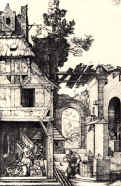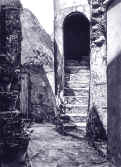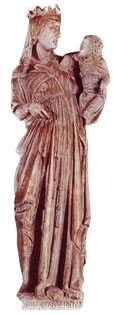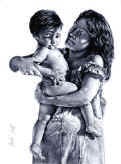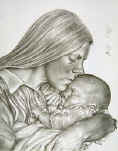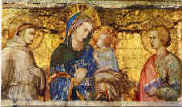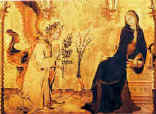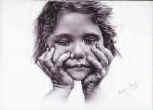|
The union of the drawing with the pictorial work together with the sign is superimposed to the main painting technique. Guise Borrello, man from the South who moved to Turin, has been working harder and harder to join the “school of the new realism “. This school discovers common life, the man, the world around us, reproduces physical and sensory details like a magnifying lens and has a careful look at the sign that Bossy already proposed at the Academy of Brea at the end of 1700. Beside him, many other artists were inspired by such a technique, including the Hyperrealism of the Seventies, the magical Hockney or Manzù’s archaic primitivism. Borrello engraves faces with a voracious expression, investigates psychologies and looks through a passionate style revealing all the structural correlations of the images and the laborious performance of their plastic and dynamic system. The drawing, sometimes made by biro, sometimes by precious metallic point creates on the sheet a sketch, a mark along with the conveyance of meanings that seem to shade off into the painting’s depth and complexity. The severe line that gets entangled, the pen that looks for a volute, the tangled threads, the sheet or cardboard getting filled minute by minute, the sketch that stops the simultaneousness of expressions, a harmony of surface and lines, the chiaroscuro effects, the paper arousìng unique emotions originated from the artist’s work in his glittering universe. A classical performance that seems to give us a new Dürer, a Dürer of the late xx Century, a painter characterized by his strokes, his nuances, his dark notches obtained through a precise structure of the lines. Borrello’s style Is represented by the women looking like the gothic Madonna’s painted by the artist of the school of Siena or recalling the sculptures made in Pisa; the Christ portrayed with rigour and synthesis of signs; the clear prophiles like those of the uninterrupted series about the “Betrothed”; meanings conveyed by the highly precious engravings; his oval images reminding of Piero Lorenzetti or Simone Martini. In Borrello’s work there is a unique humanistic breeze, a network of signs as a result of his retiform pictures. The graphic line runs across the surface, the volumes are closely welded and look more and more outstanding, the plastic blocks and the live material, delicate and fragile, are simply astonishing and you are nearly afraid of scratching them. The artist has already impressed the paper with his magical stroke, giving us harmonious creations characterised by a precious outline, by the rhythm of his images, easily freed from their outer meaning. His signs show a rare sensitiveness in fixing the volumes with techniques rarely used, thanks to a careful study of reality and to a superb skill as a draftsman by which he emphasizes the curved lines that empty the space and put In evidence the grace, the delicate proportions of the bodies, but above all a grieved and enchanting beauty. The vibration of the sign, the elegant layout of the surface and the summarizing plastic are all parts of a composed poetry. The painter weaves a web that reveals us scenes and faces, movements of the bust, nods of the head and the imperceptible raising of the eyes. Few Italian artists are capable today of touching us in such an Introspective manner or are so successful in setting fibres of a hidden universe in motion. The techniques used by Borrello are always surprising. Like in the glorious past, he draws by pen, even If Instead of the traditional quill he utilizes the biro and repeaces the black ink with a different one, which glides more softey over the point of the monochromatic biro, black or (coloured) blue, giving it a particular shading induces us to examine it. This method was already described by Cennini and Leonardo (1452- 1519). The second one wrote in the “Treatise on Painting” as follows: “To portray relevant things, painters must first cover the paper with a light darkness, secondly they should point the darkest shadows, finally they can convey the lights but to a limited space, because lights are the first elements to be left behind by the eyes”. Borrello also uses another ancient technique, the drawing with metallic points on paper. Traditionally, painters used the silver point or the lead one, whereas he chooses among silver, gold, palladium, platinum and titanium. Such materials leave a clear imprint on the permanent signs that give to the figures a sense of naturalness, vitality, movement and internal modelling, so that the picture becomes the most daring evidence of a soul that has been portrayed, but not in a traditional way; it is only colour, and colour is one of the most important elements of drawing. The metallic points produce clear and incisive lines, wonderfully drawn near and tangled, which are subject to oxidation, so that they tend to change their original colour. This is the worth of drawing, thanks above all to Borrello’s work. Today he is the only artist to use ancient techniques. The colour of his drawing contains both the spot and the line, because one is the result of a specific procedure, whereas the other comes from nature. The use of the charcoal, the pencil and the red crayon conveys, through their nuances, the most expressive meaning to the picture. The drawing, and this in particular, is without any doubt an element of culture, and makes us recognize on the paper Iong-standing ideals. Here he is, the “master of the new Realism”, a master whose drawing Is both poetry and legend, the flourishing and fading of beauty.
Milano, 6 febbraio 1997 Carlo Franza
|
|
|||||
|---|---|---|---|---|---|---|
